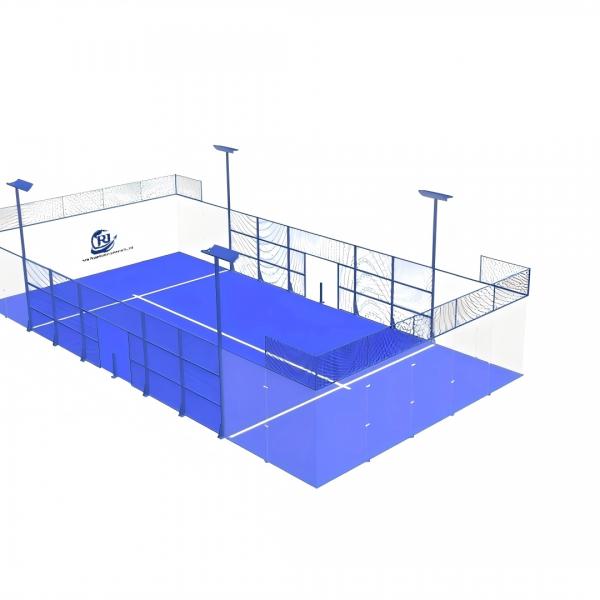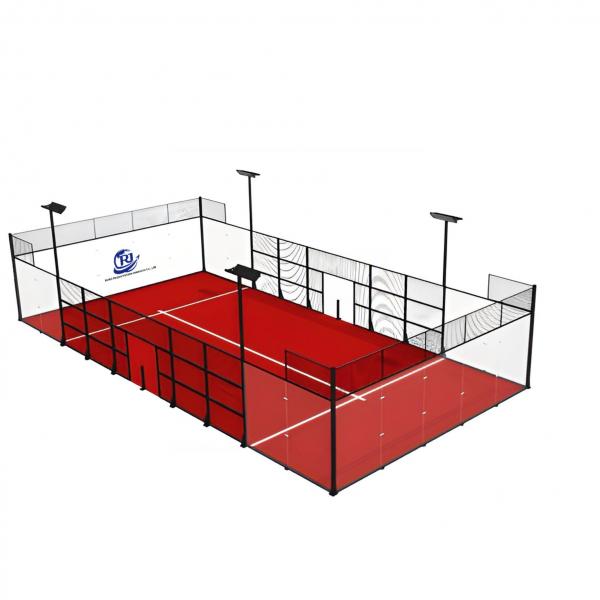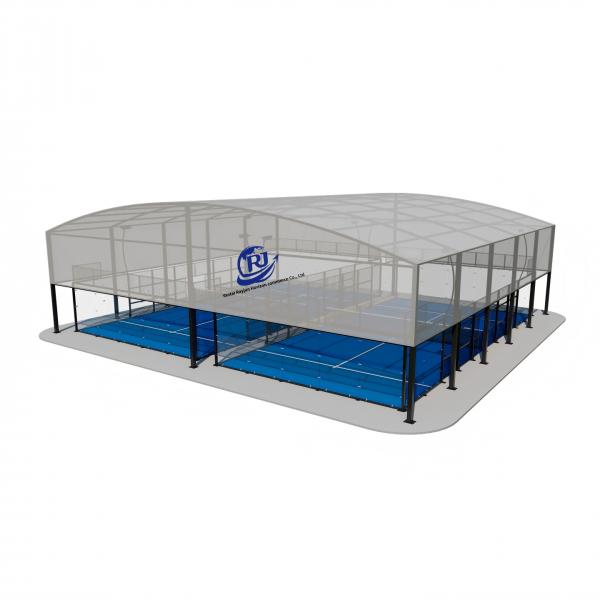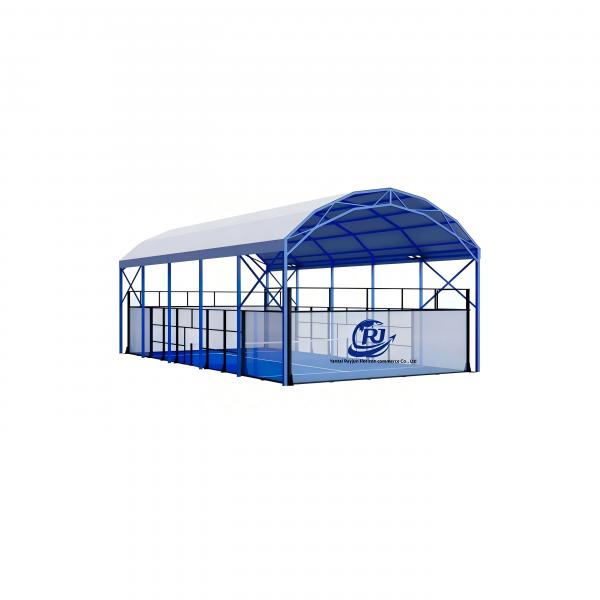The minimum space required to build a standard padel court is typically:
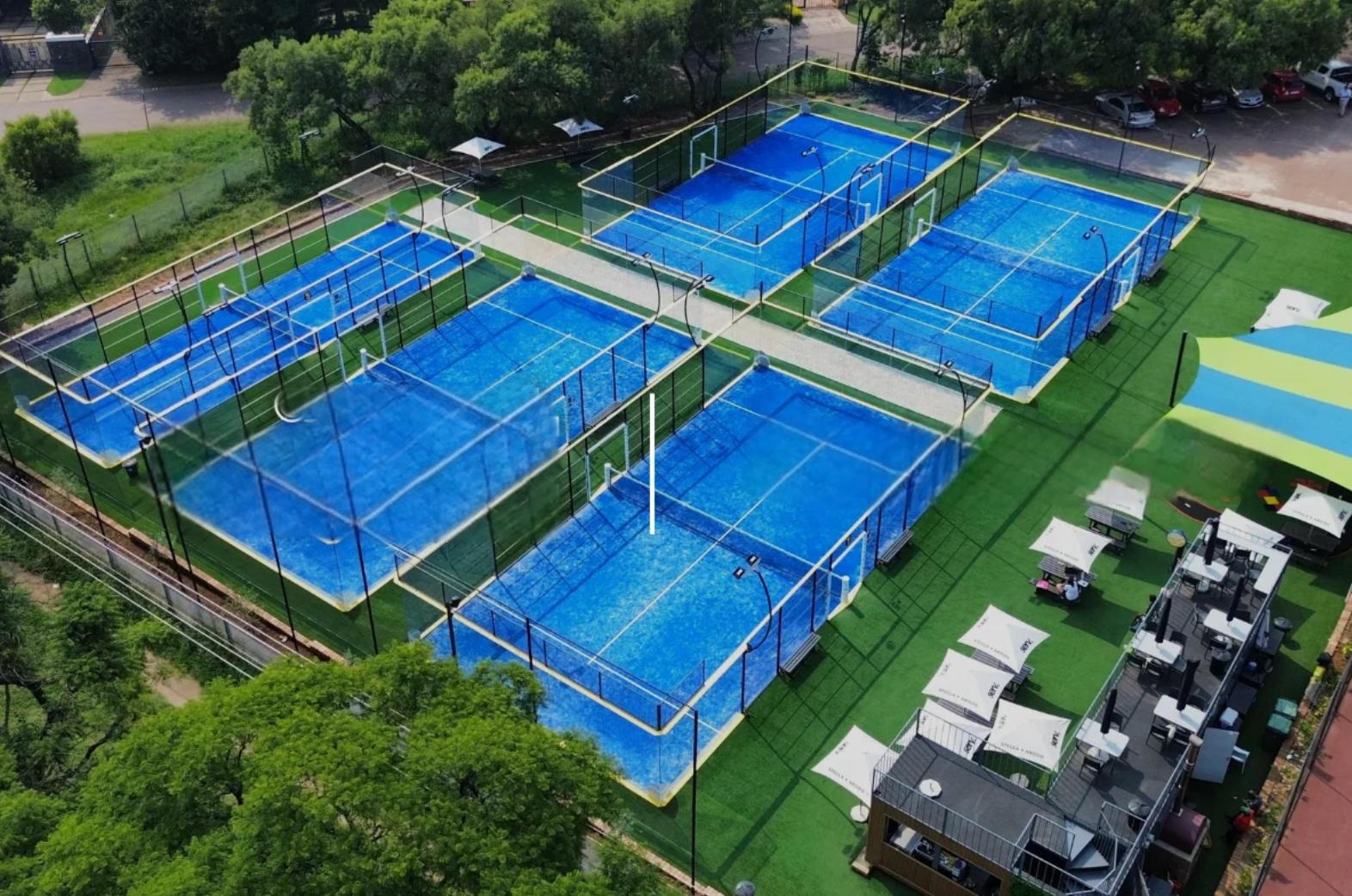
20 meters long
10 meters wide
This is the official size of the playing area (including the walls and fencing).
Additional space considerations:
You’ll want some extra space around the court for safety, player movement, and maintenance access. Usually, adding about 1 to 2 meters extra on each side is recommended.
So, a safe minimum footprint would be around:
22 to 24 meters long × 12 to 14 meters wide
This ensures enough clearance and comfortable access around the court.
Building a padel court is a great investment, but like any project, it comes with some pain points or challenges. Here are the main ones to keep in mind:
1. Initial Cost and Investment
Although cheaper than tennis courts, padel courts still require a significant upfront investment (court construction, materials, fencing, lighting, etc.).
Quality materials (glass walls, artificial turf, lighting systems) can be pricey.
2. Finding Suitable Space
Need a flat, level surface with enough room (20×10 meters plus clearance).
Urban areas may have limited space or zoning restrictions.
Sometimes challenging to fit courts in existing sports facilities.
3. Permits and Regulations
Local building permits and zoning laws can slow down or complicate construction.
Noise regulations might apply due to enclosed courts reflecting sound.
4. Maintenance
Courts need regular upkeep, especially turf replacement and glass cleaning.
Drainage and weather protection need to be well-planned to avoid damage or downtime.
5. Market Demand and Location
In areas where padel is not yet popular, demand might be low.
Location needs to be accessible to attract players regularly.
6. Lighting and Infrastructure
Good quality lighting is necessary for evening play, adding to costs.
Infrastructure for water drainage and electricity must be carefully installed.
Designing and constructing a padel court well can save money, boost player satisfaction, and ensure longevity. Here are some solid tips for padel court design and construction:
1. Site Selection & Preparation
Choose a flat, stable surface with good drainage to avoid water pooling.
Ensure there’s enough space not just for the court (20×10m) but also for safe movement around it (extra 1–2 meters on all sides).
2. Court Orientation
Ideally, orient the court north-south to minimize sun glare affecting players during morning and late afternoon matches.
3. Surface Material
Use high-quality synthetic turf with good shock absorption to reduce player injuries and improve playability.
Make sure the turf has proper drainage and UV protection for durability.
4. Walls and Fencing
Use tempered glass walls (10mm or more thickness) for better visibility and aesthetics.
Ensure sturdy metallic fencing for durability and safety.
Pay attention to wall height and design according to official rules (glass up to 3 meters, fencing up to 4 meters).
5. Lighting
Install LED lighting with a minimum of 300 lux uniformly distributed for night play.
Avoid glare or shadows by using properly angled fixtures.
Use energy-efficient lighting to reduce long-term costs.
6. Access & Amenities
Plan for easy access paths and nearby amenities like seating, water fountains, and restrooms.
Provide a small shaded area or shelter for players waiting or resting.
7. Drainage System
Incorporate an effective drainage system under the turf to prevent water accumulation.
Ensure the court surface has a slight slope (around 1%) to direct water off the court.
8. Compliance & Safety
Follow international padel federation guidelines for dimensions and materials.
Include padding on any metal posts or corners to avoid injuries.
9. Maintenance Planning
Design for easy turf replacement and wall cleaning.
Use materials that withstand weather conditions specific to your location.




